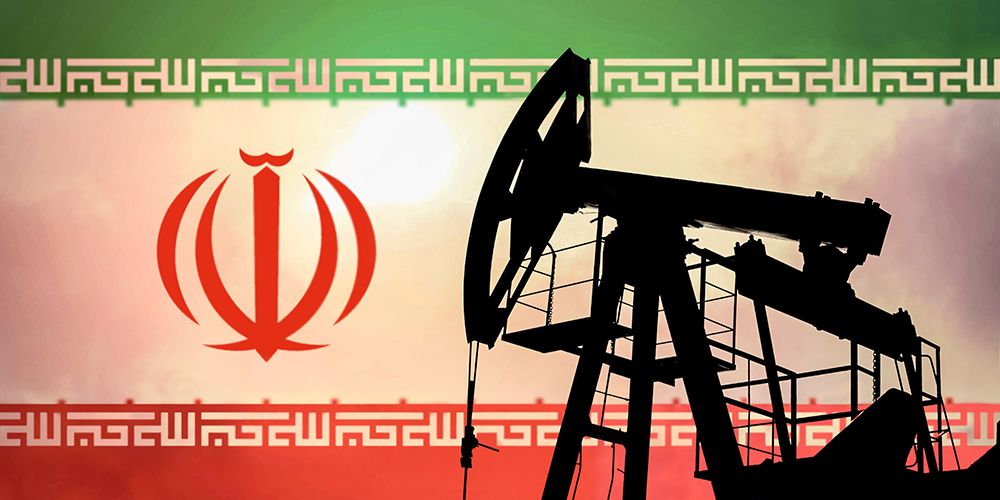Search

Publications
Cooperation between Russia and Iran in energy sector – outlook

According to OPEC, the proven crude oil reserves in Iran as of the end of 2021 constitute circa 208.60 bn bbl. [1] On this measure, the Islamic Republic of Iran (IRI) is behind only Venezuela and Saudi Arabia. As for the natural gas reserves, Iran is the second in the world after Russia.
The oil-and-gas sector is a structural one for the Iranian economy and the key driver for its growth. At the same time, a lot of problems have been accumulated in this sector, and the systemic approach is needed to resolve them. Despite obvious competition with Iran in this sphere, Russia always expressed its interest in cooperation with the IRI in oil-and-gas sector, but the sanctions imposed on Iran by the USA and the EU constituted the key barrier to this. Maybe today, when Russia and Iran found themselves in a similar situation – under the heavy pressure of the West, they can be successful in implementing the long-planned interaction is full.
Problems of the Iranian oil-and-gas sector
The main onshore oilfields of Iran are Akhmaz-Asavari, Marun and Gasharan in the Southern province of Khuzestan. The major off-shore oilfield in Iran is Abuzar located in 76 km to the South-West from the Kharg Island, the center of Iranian oil-and-gas production and export in the Northern part of the Persian Gulf. Oil and gas are transported to the Kharg Island via pipelines from such fields as Abuzar, Dorud and Foroozan, as well as from the fields of Bahregan area. [2]
At the same time, it should be noted that over dozens of years the crude oil output at Akhmaz-Asavari, Marun and Gasharan oilfields are gradually stagnating and shrinking. [3] This is associated, first of all, with the main challenge of the sector – absence of advanced technology. The impossibility to access foreign investment and promising foreign technologies forced Teheran to suspend the new oilfields development projects, and the obsolete equipment at the operating wells is not capable of meeting the targets. [4] The main manufacturers of drilling equipment (Baker Hughes, Halliburton, Schlumberger) exited the Iranian market, and operating the equipment currently available in Iran without adequate maintenance and oilfield services will have more and more failures and will demonstrate low reliability indices. The problem of obsolete oil processing equipment at the Iranian refineries is of the same kind.
Another serious challenge for the Iranian oil sector is insufficient funding. The IRI Ministry of oil is in charge of implementing the government policy and the respective legal framework in oil-and-gas and petrochem sectors, including granting subsidies for the industry. However, back in 2014 it was announced that the funds allocated for such subsidies were exhausted. [5] Today, numerous oil projects are facing the need to search for funding sources.
Finally, non-optimal use of gasoline significantly slows down the advancement of the sector. Low prices at fueling stations and use of Iran-make cars with much higher fuel consumption versus foreign cars, underpin the growth of fuel consumption across the country in general. According to 2021 data, the average consumption of gasoline in Iran is almost 90 mln liters per day. [6] Simultaneously, the illegal export of Iranian gasoline to the neighboring countries is growing steadily from year to year, bringing profits exclusively to the organizers of such unlawful business schemes.
As for gas, similar problems may be observed in this sector – absence of advanced technologies, wear and tear of the equipment, and shortage of skilled workforce. With natural gas reserves constituting around 34.077 bcm [7], Iran is exporting the minimal volumes still using the major part of them for domestic consumption. It should be noted that in general the energy sector in IRI is loss-making due to the subsidies, the government has very little revenue from it. [8] The issue of pipelines depreciation is connected with this: in the Iranian gas industry the pipeline construction costs are not covered by the profit after its distribution. [9]
Thus, despite significant natural reserves of hydrocarbons, the Iranian oil-and-gas sector is undergoing the deep crisis. On one hand, it is underpinned by non-rational social policy of the authorities, when the consumption of energy resources in subsidized and the citizens practically do not bear any costs. On the other hand, it is associated with the Western sanctions restricting the access to modern technologies for Teheran.
The IRI oil-and-gas sector as a whole is badly in need of investment for the recovery. It is quite possible that Russia may play a key role in this.
New outlook
In recent time, Moscow and Teheran are finding more and more common points both in political and in economic spheres. The Ukrainian crisis has resulted in the collapse of the relations with the West and made the Iranian vector of Russian foreign policy the special topic of focus, on which high hopes were laid. [10]
It is not by chance that 2022 has already become the record year in terms of the number of high-level and top-level meetings between the two countries. During the January meeting of Alexander Novak, the Deputy Chair of the RG Government, with Javad Owji, the IRI Minister of oil and the co-chair of the Russian-Iranian Commission for trade and economic cooperation, it was announced that some major joint projects are already being implemented in the energy sector and other sectors of the economy, plus there are some promising projects to work on in future. The Iranian party also highlighted the leading role of energy sector in the development of bilateral interaction of our countries. «We are interested in developing multilateral relations with Russia in the energy sphere, in utilizing all the emerging opportunities», Javad Owji emphasized.
The visit of Vladimir Putin, the President of the Russian Federation, to Teheran in July 2022 to participate in the summit of the Astana group was one of the most awaited for. Some of the decisions made at this summit deserve to be especially highlighted.
In particular, speaking about cooperation in the energy sector, signing the Memorandum of mutual understanding on strategic cooperation between the National Iranian Oil Company (NIOC) and Gazprom on July 19 was one of the most dramatic events. This document stipulates approximately USD 40 bn investment into the Iranian energy sector. [11] It was signed by Valeri Markelov, the Deputy Executive board Chairman of Gazprom, and Mohsen Khojastemehr, NIOC CEO.
The MOU envisages for analyzing the possibilities of interaction in developing oil and gas fields of Iran, in gas and petroleum products swaps, in implementing high and low-tonnage LNG projects, in construction of gas trunk pipelines and cooperation in R&D and technology sphere. According to Iranian sources, these projects will cover the development of Kish and Northern Pars gas fields, improving the efficiency of Southern Pars field operation, the development of six oilfields and construction of export gas pipelines. [12]
The MOU does not establish the exact deadlines for implementing the achieved agreements, probably, the project will not be implemented in full, but it clearly demonstrates Moscow’s intent to boost cooperation with Teheran in oil and gas sector. On top of that, this step by such major corporation as Gazprom may be a positive signal for many other Russian companies interested in collaboration with Iran, but concerned with potential consequences in the form of sanctions by the USA and the EU.
At the same time, it needs to be understood that Moscow aspirations for establishing interaction with Teheran also is underpinned by the intent of the Russian party to obtain certain leverage on the oil-and-gas sector of Iran. [13] After all, the RF and the IRI, first of all, are competitors in the energy market, and only after that they are partners.
Nevertheless, in principle, nothing impedes the Russian-Iranian rapprochement in the energy sphere. Both countries apply the pragmatic model allowing to find mutually beneficial areas for cooperation. Hence, in respect of energy, in addition to the announced investment Russia can help Iran with training skilled workforce for oil-and-gas sector. Teheran, in its turn, may share its ample practices of bypassing the Western sanctions with Moscow.
It should be noted that the plans for developing energy partnership of Russia and Iran are not limited to only bilateral projects. Currently, discussions are underway about joint projects of exporting gas to Oman and Pakistan. [14]
The length of the gas trunk pipeline from Iran to Oman sultanate will make more than 400 km. The 200 km onshore section will go from the Iranian Southern gas area Asaluyeh to Kuh-i Mubarak in Hormozgan province. The length of the sub-sea section between Iran and port Sohar in Oman will make 200 km. Oman may be receiving 20 bcma of gas. This will allow the sultanate both to satisfy its domestic needs and charge the available LNG capacities for further export to the international markets. According to the preliminary estimates, the cost of the sub-sea section of the pipeline is USD 721 mln, the total cost of the pipeline will make USD 1.2 bn.
The pipeline from Iran to Pakistan with the option of its further extension to India also looks a very promising project.
The Iranian party also proposed to the RF gas swaps via the territory of Iran [15], and then to any point of the world, including liquified gas.
Previously, Gazprom announced its plans of participation in building the gas transportation system in Iran including underground gas storages (UGS) and LNG plants within the development of the giant gas fields Southern Pars. [16]
In that or another way, Moscow and Teheran are both interested in forming the new economic (and respectively – the new energy) order as an alternative to the traditional Western one. It is quite possible that in the brad new circumstances underpinned by systemic shifts in global politics after 24 February 2022, Russia and Iran will collaborate in the energy sphere more actively, than before.
In case of successful implementation of the agreement with Gazprom, Iran and Russia may become the most important players in the global energy market and significantly influence the hydrocarbons prices through their joint actions and promoting their common interests. Gazprom will strengthen its position of one of the leading energy companies of the world, it will also assure new opportunities for increasing its geopolitical influence for the Kremlin.
1. OPEC share of world Crude Oil Reserves, 2021.
2. Iran started producing oil from the giant oil reservoir Asmari of the Abuzar field. ETP GPB, 23.07.2022.
3. Fuel and energy complex of the Islamic Republic of Iran. The outlook for cooperation with Russia. E.A. Telegina, G.O. Khalova, N.I. Illeritsky, 2018.
4. Current situation and outlook for the Iranian oil-and-gas sector. D.G. Rodionov, 2020.
5. Iran consumes almost 90 mln liters of gasoline per day despite the pandemic. Neftegaz.Ru, 10.08.2021.
6. OPEC’s 2022 Annual Statistical Bulletin. https://asb.opec.org/ASB_PDFDownload.php
7. Why will Iran have to cancel fuel subsidies? Rambler, 26.12.2018.
8. Development of managing improvement of productivity in iran’s oil and Gas tanks. Journal of Exploration & production oil & Gas, 2021.
9. Moscow – Teheran axis: alliance without excessive obligations. Russian International Affairs Council, 29.07.2022.
10. Iranian Oil Company and Gazprom signed the Memorandum of Understanding. TASS, 19.07.2022.
12. Gazprom and NIOC agreed about collaboration in oil-and-gas sphere. Vedomosti, 20.07.2022.
13. Iran has joint plans with Russia to export gas to Oman and Pakistan. TASS, 27.07.2022.
15. Teheran offered Moscow swap gas supplies via Iran. TASS, 20.01.2022.
16. Iranian thawing cannot be frozen. Neftyanka, 24.03.2016.







